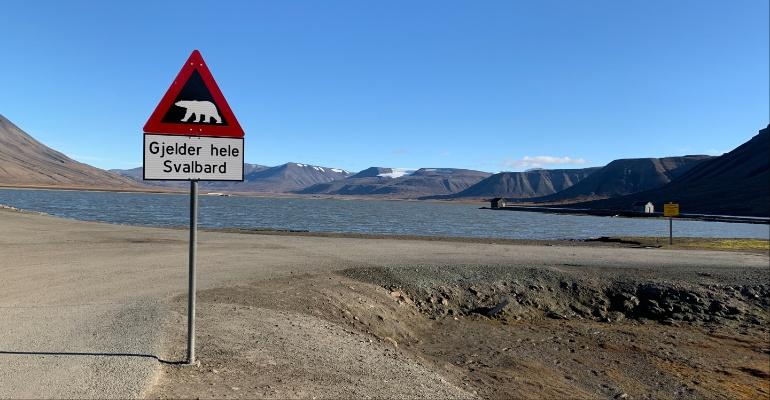Expected to enter force on January 1, 2025 the regulatory changes include a 200-passenger limit in protected areas. Deliberation on these restrictions has been ongoing.
Resolution to protect wildlife
The purpose is to protect wildlife, and one of the largest wilderness areas left in Europe. ‘Climate change together with increased activity has resulted in a great pressure on the vulnerable arctic wildlife and nature in Svalbard,’ said Andreas Bjelland Eriksen, Norway’s minister of climate and environment. ‘We are now tightening the environmental regulations in Svalbard to strengthen the protection of flora and fauna.’
The proposal consists of changes to provisions on polar bear protection with a recommended distance requirement of 300 and 500 metres, and a ban on the use of drones closer than 500 metres to a bird cliff.
'Disappointing'
A spokesperson for the Association of Arctic Expedition Cruise Operators confirmed the new regulations will have consequences for cruise operations in Svalbard. ‘In short, we are disappointed with the policy process and the resulting regulations,’ they said. ‘Despite a thorough consultation process, where a united industry has worked on providing solutions in line with the common goal of protecting the vulnerable wildlife and wilderness of Svalbard, we are now presented with measures which not only limit operations, but also will put a severe strain on the remaining areas open for shore landings.’
They continued, ‘We will however now make a more thorough assessment of the decisions announced and prepare information for AECO's members so we can adapt accordingly.’
Key amendments
From next January, under the main amendments, landings in protected areas are prohibited, except for 43 landing sites — a ban that applies strictly to tourist activities, not individual travellers or permanent residents.
The use of snowmobiles and tracked vehicles is permanently banned on sea ice after March 1 in selected fjords, with an exception for access to cabins.
Motor traffic at sea may not exceed the speed limit of 5 knots at a distance of 500 metres from land outside bird cliffs in the period April 1 to August 31. Additionally, motor traffic at sea must keep a minimum of 150 metres from haul-sites for walruses (except for necessary access to ports, buildings, etc.) and the speed limit for motor traffic is 5 knots at a distance of 300 metres from these haul-sites.
Measures include a general ban against breaking fast ice. This does not apply to motor traffic to keep the fairway into Longyearbyen and Barentsburg open, for supplies to Ny-Ålesund, as well as for the Norwegian Coast Guard’s performance of necessary tasks.
Copyright © 2024. All rights reserved. Seatrade, a trading name of Informa Markets (UK) Limited.
Add Seatrade Cruise News to your Google News feed.  |

